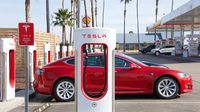The Tesla Model 3 has become one of the UK’s most popular electric cars – and it’s easy to see why. Combining cutting-edge technology, excellent performance, and impressive electric range, the Model 3 offers a compelling package for UK drivers considering the switch to electric. Whether you’re after lower running costs, zero-emissions driving, or the convenience of Tesla’s Supercharger network, the Model 3 delivers across the board.
As of early 2025, the Model 3 is available in three main versions: Rear-Wheel Drive (RWD), which is the entry-level option with strong performance and up to 318 miles of range (WLTP); Long Range (Dual Motor AWD), offering up to 390 miles of range, ideal for frequent motorway travel; and Performance, Tesla’s high-speed variant with blistering 0–60 mph times and sporty handling. Prices in the UK start from around £39,000, depending on configuration and optional extras.
The Model 3 delivers an outstanding driving experience. Even the standard RWD model feels fast, while the Long Range and Performance trims rival sports cars in acceleration. The low centre of gravity, thanks to the underfloor battery pack, ensures sharp handling and a stable ride. Whether you’re navigating tight city streets or cruising on the M1, the Model 3 feels smooth, agile, and surprisingly fun to drive.
Range anxiety is a thing of the past with the Model 3. Depending on your chosen trim, you’ll get up to 390 miles on a single charge (WLTP) – more than enough for most drivers. Tesla’s UK Supercharger network is one of its biggest advantages. With hundreds of fast-charging stations across the country, you can charge from 10% to 80% in around 25 minutes. Plus, you can now use many third-party chargers thanks to the CCS port. For most owners, home charging via a Type 2 wallbox is the most convenient, offering a full charge overnight.
Step inside the Model 3 and you’re met with a minimalist, futuristic cabin. The entire interface is controlled via a central 15-inch touchscreen, which handles everything from sat-nav to climate control. It can feel strange at first, but many drivers grow to appreciate its simplicity and customisability. Tesla’s infotainment system includes built-in sat nav with real-time traffic, over-the-air software updates, voice controls, and optional Premium Connectivity, which features Spotify, Netflix, live traffic, and more. The interior is spacious and surprisingly comfortable, with ample rear legroom and a generous boot (plus extra space in the front ‘frunk’).
Every Tesla Model 3 comes with Autopilot, which includes adaptive cruise control and lane-keeping assist. For an additional fee, you can add Enhanced Autopilot or Full Self-Driving (FSD) capability – though it’s worth noting that FSD is still in beta and not legally autonomous in the UK. Still, Tesla’s driver-assist tech is among the best on the market, especially for long motorway journeys.
Electric cars like the Model 3 are significantly cheaper to run than petrol or diesel cars. Expect lower charging costs (especially with home charging), road tax (VED) – currently £0 for EVs, maintenance costs, as EVs have fewer moving parts, and congestion charge exemption in London (as of 2025, for zero-emissions vehicles). Plus, company car drivers benefit from ultra-low BiK tax rates, making it a financially smart option for fleets.
As of March 26, 2025, Tesla is also opening a pop-up store on Oxford Street featuring the Cybertruck, new Model Y, Optimus Bot, Model 3 Performance, and Powerwall 3. This initiative comes at a time when Tesla is facing challenges, including a significant decline in sales across Europe, which fell by 44% in February 2025, according to figures from Jato Dynamics. The brand’s market share was 9.6% in February, marking a five-year low.
Felipe Munoz, a global analyst at JATO Dynamics, commented, “Tesla is experiencing a period of immense change. In addition to Elon Musk’s increasingly active role in politics and the increased competition it is facing within the EV market, the brand is phasing out the existing version of the Model Y – its best-selling vehicle – in anticipation of the introduction of a new refreshed version.” This transition often leads to a drop in sales before new models become widely available.
Despite these challenges, Tesla's sales in the UK have shown resilience, with a year-to-date increase of 11.25% in the first two months of 2025. The company has achieved 250,000 vehicle deliveries in the UK as of March 26, 2025. The recent delivery of its 250,000th electric vehicle, a Model 3, to the Cotter family, underscores the model's appeal, particularly among families.
In February, the Tesla Model 3 and Model Y ranked second and third, respectively, as the UK’s most popular cars, just behind the Mini Cooper. This success in the UK appears untainted by the controversies surrounding Musk, which have led to vandalism of Tesla vehicles and properties in the United States. The FBI has created a task force to address these attacks, which are being classified as domestic terrorism.
In a recent meeting, Musk addressed these issues directly, stating, “This is psycho. Stop being psycho!” He urged those damaging Tesla properties to reconsider their actions, emphasizing the absurdity of such behavior in light of the brand’s innovations and contributions to the automotive industry.
Meanwhile, Tesla is also expanding its Supercharger network. Hyundai and Genesis have recently gained access to Tesla’s charging stations in the U.S., allowing owners of specific EV models to utilize the network. This move is expected to enhance the charging experience for Hyundai customers and reflects Tesla’s commitment to collaboration within the electric vehicle market.
As Tesla navigates these tumultuous waters, the future remains bright for the Model 3 and the brand as a whole. With ongoing advancements in technology, a growing network of charging solutions, and a commitment to sustainability, Tesla continues to be a frontrunner in the electric vehicle revolution.





